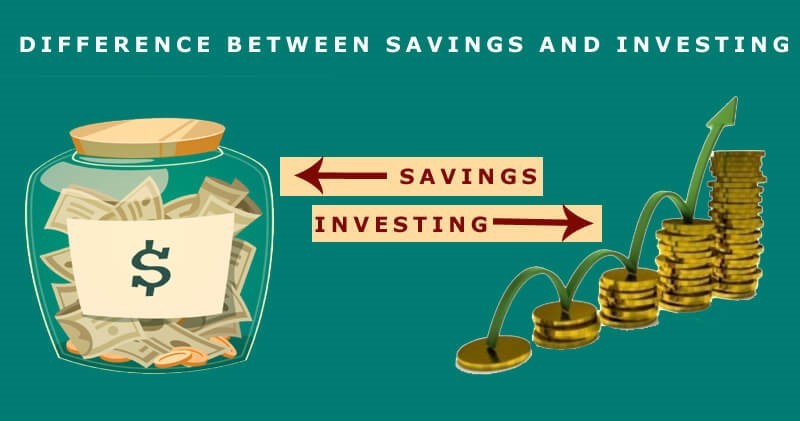Stocks are risky. But with the right knowledge and preparation, you can reduce risk and increase your chances of success as a stock investor. Investing in stocks isn’t for everyone, but if you have a high-risk tolerance and want to build long-term wealth, stocks are a good starting point. Have you heard of people losing all their money in the stock market? Yes, investing in stocks is indeed risky, but it also has a very high reward potential. If you don’t have a lot of money to invest or you think the risk is too great for your current situation, there are other ways to invest in stocks. There are several alternatives to directly purchasing publicly traded stocks. Read on to learn more about these different ways to invest in stocks, so you can choose the one that suits you best.
What are the benefits of investing in stocks?
If you want your money to grow over the long term, stocks are the way to go. The stock market has a proven track record of generating long-term wealth. It has always recovered from any downturn and has been a solid source of capital for decades. Many people earn a large portion of their income from stocks, including executives, entrepreneurs, and people who work for private companies. If you invest in stocks, you can potentially increase your income over time. You can also use stocks to diversify your long-term investment portfolio, which is another reason why stocks are a good long-term investment.

Types of investments in stocks
Once you decide to invest in stocks, you will come across several different ways to do so. Each of these types of investments has different advantages, disadvantages and risks.
- Common stocks: These are the most common form of investment you can buy in the stock market, and represent partial ownership of a company. By owning common stock in a company, you become a partial owner. You are entitled to a share of the company’s assets, profits and income through the right to vote on company matters and to receive dividends or other payments from the company.
- Preferred Stock: These are hybrid investments that have some characteristics similar to debt. This type of equity investment is typically less risky than common stocks but also has lower growth potential.
- Investment funds: These are investment funds that buy a diverse basket of stocks. Investment funds are managed by professional investors whose objective is to build a portfolio that offers constant returns. Mutual funds are very popular among individual investors, and there are many different types to choose from.
- Exchange-traded funds (ETFs): These are funds that hold a basket of stocks, bonds, and other assets. They are traded on a stock exchange and their value is determined by the current price of their underlying assets. ETFs are very similar to mutual funds but are usually more focused on specific sectors or regions.
How to invest in listed stocks
Before buying stocks, you should know the fundamentals of the stock market and the risks that come with investing. You should also have a financial plan for how much you can afford to invest in stocks, as well as a time frame for when you plan to sell them. The first step is to decide how much you can afford to invest in stocks. Many experts recommend investing a certain percentage of your income in stocks. The exact amount will depend on your risk tolerance, investment timeline, and other factors. You can also use our investment calculator to determine how much you can invest in stocks based on your estimated future financial situation.
Investment funds
Mutual funds are a type of stock investment that allows you to pool your money with other investors to buy a basket of stocks or bonds. By investing in a mutual fund, you can spread your risk across many different companies, sectors and geographies. Mutual funds are professionally managed investment funds that purchase a diverse basket of stocks and bonds. Its goal is to deliver consistent performance, regardless of what happens in the stock market. Different types of mutual funds specialize in different types of investments, including stocks, bonds, and special “alternative” investments such as real estate and commodities. You can invest in mutual funds directly from your bank or online brokerage account. Mutual funds are convenient because you can set monthly payments and forget about them until you are ready to sell them. But mutual funds are also very common and have a high level of market risk since you are buying a large number of shares with a single investment.
Exchange-traded funds (ETFs)
ETFs are funds that hold a basket of stocks, bonds and other assets. They are traded on a stock exchange and their value is determined by the current price of their underlying assets. ETFs are very similar to mutual funds, but they tend to be more focused on specific sectors or regions. ETFs are very convenient because they can be bought or sold at any time of the day, and a small amount of money can be used to invest in a diversified basket of stocks. They are a good investment for beginners who want to get started in the world of stocks with a small initial investment. But in general, they are high-risk investments, so you should have a high risk tolerance before investing in ETFs.
Robo Advisors
These online investment services use algorithms and automated portfolio management to help people manage their investments. You can use a robo-advisor to create an investment portfolio based on your risk tolerance and financial situation. They also offer managed accounts, where they take care of the investment decisions for you. Robo-advisors are a type of investment fund that manages your money for a fee. They are a convenient way to invest. They are best suited for people who want to try investing but don’t know where to start.
Summary
Investing in stocks is not for everyone. But if you want to build long-term wealth, stocks are a good starting point. It can be a risky venture, so it’s important to know the fundamentals of the stock market and how to invest in stocks. Once you decide how much you can invest in stocks, you can choose between different stock investments, such as mutual funds and ETFs, or you can buy and sell individual stocks.



